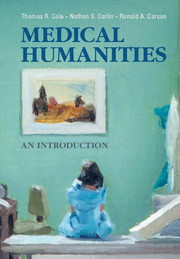Book contents
Part II - Literature, the Arts, and Medicine
Part Overview
Summary
The term “the arts” derives its meaning from the context in which it is used. “Fine arts” refers to activities and products of the imagination such as music, painting, and sculpture, which appeal to a sense of beauty. Branches of learning such as history, languages, literature, philosophy, and religion are traditionally known in academic parlance as liberal arts. “Arts and sciences” distinguishes the humanities, also known as human sciences, from natural sciences and social sciences. Similarly, in an older idiom, “letters and sciences” draws the same distinction but gives literary learning pride of place in the humanities. And there are “arts of,” as in martial arts and healing arts. This section explores some contemporary connections between humanistic study and the healing arts, giving special attention to relationships between visual and verbal meaning.
Art both mirrors and challenges our settled perceptions. John Berger (1926–) writes, “Seeing comes before words ... [and] the way we see things is affected by what we know or what we believe. We only see what we look at. To look is an act of choice. As a result of this act, what we see is brought within our reach.”
- Type
- Chapter
- Information
- Medical Humanities , pp. 121 - 124Publisher: Cambridge University PressPrint publication year: 2014

